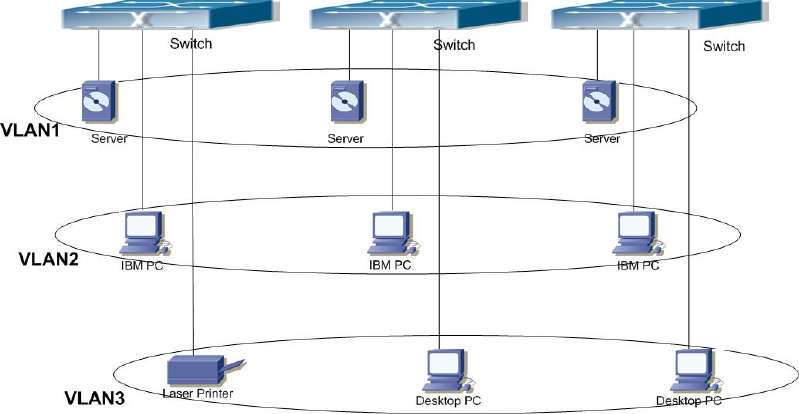
145
Chapter 5 VLAN Configuration
5.1 Introduction to VLAN
VLAN (Virtual Local Area Network) is a technology that divides the logical addresses
of devices within the network to separate network segments basing on functions,
applications or management requirements. This way, virtual workgroups can be formed
regardless of the physical location of the devices. IEEE announced IEEE 802.1Q protocol
to direct the standardized VLAN implementation, and the VLAN function of
ES4626/ES4650 is implemented following IEEE 802.1Q.
The characteristics of VLAN technology is a big LAN can be partitioned into many
separate broadcast domains dynamically to meet the demands.
Fig 5-1 A VLAN network defined logically
Each broadcast domain is a VLAN. VLANs have the same properties as the physical
LANs, except VLAN is a logical partition rather than physical one. Therefore, the partition
of VLANs can be performed regardless of physical locations, and the broadcast, multicast
and unicast traffic within a VLAN is separated from the other VLANs.
With the aforementioned features, VLAN technology provides us with the following
convenience:
z Improving network performance
z Saving network resources
z Simplifying Network Management
z Lowering network cost


















